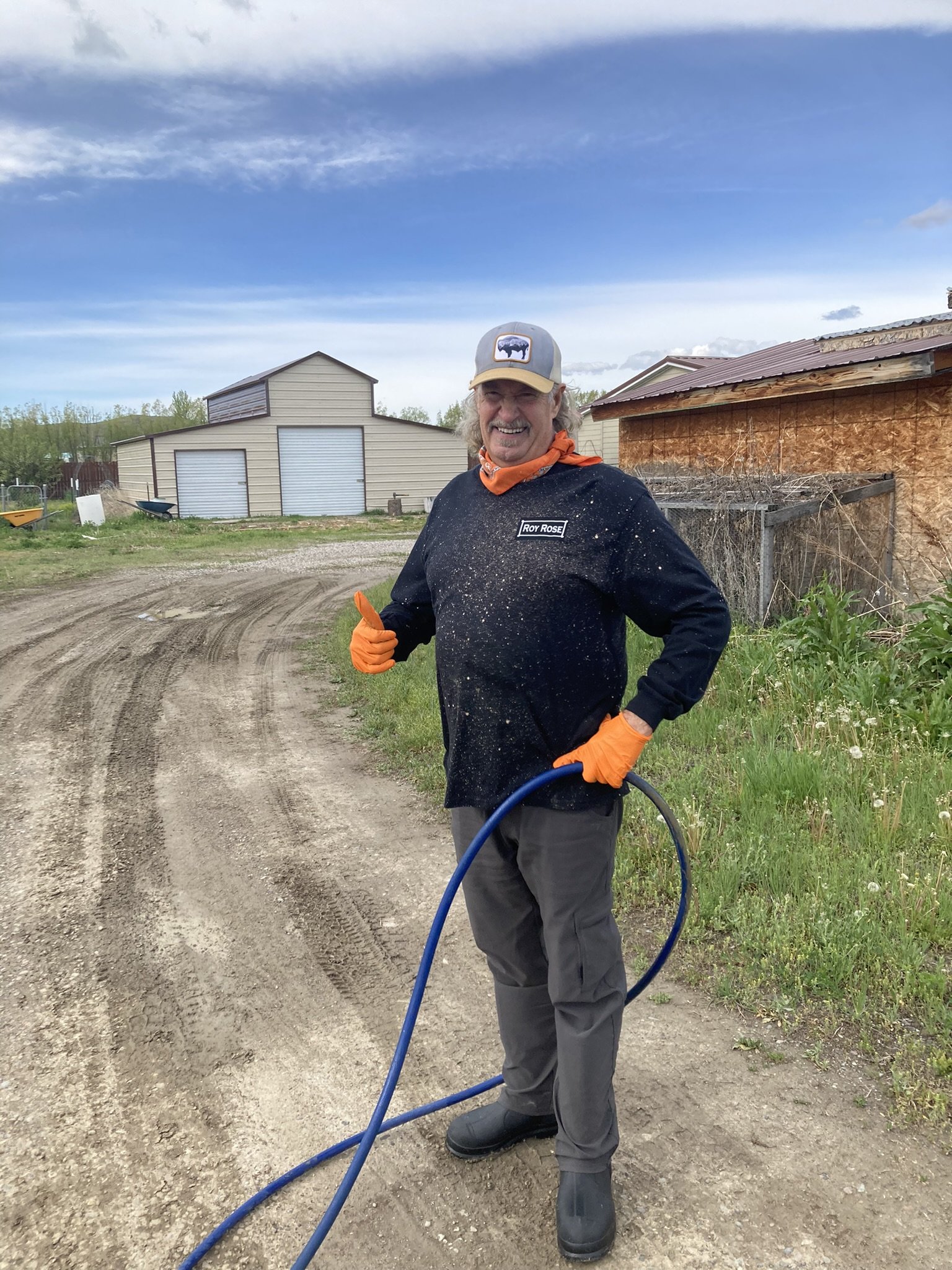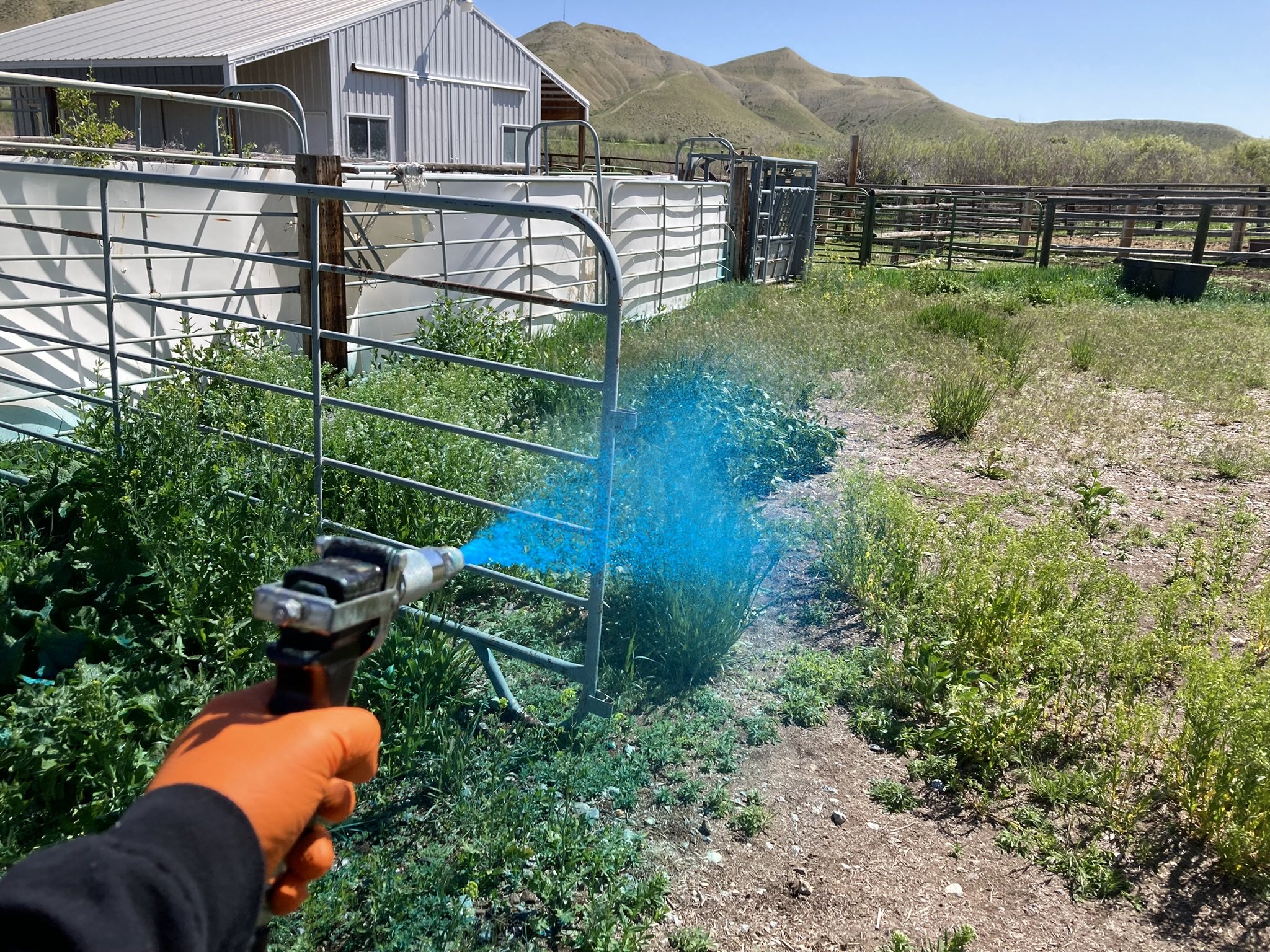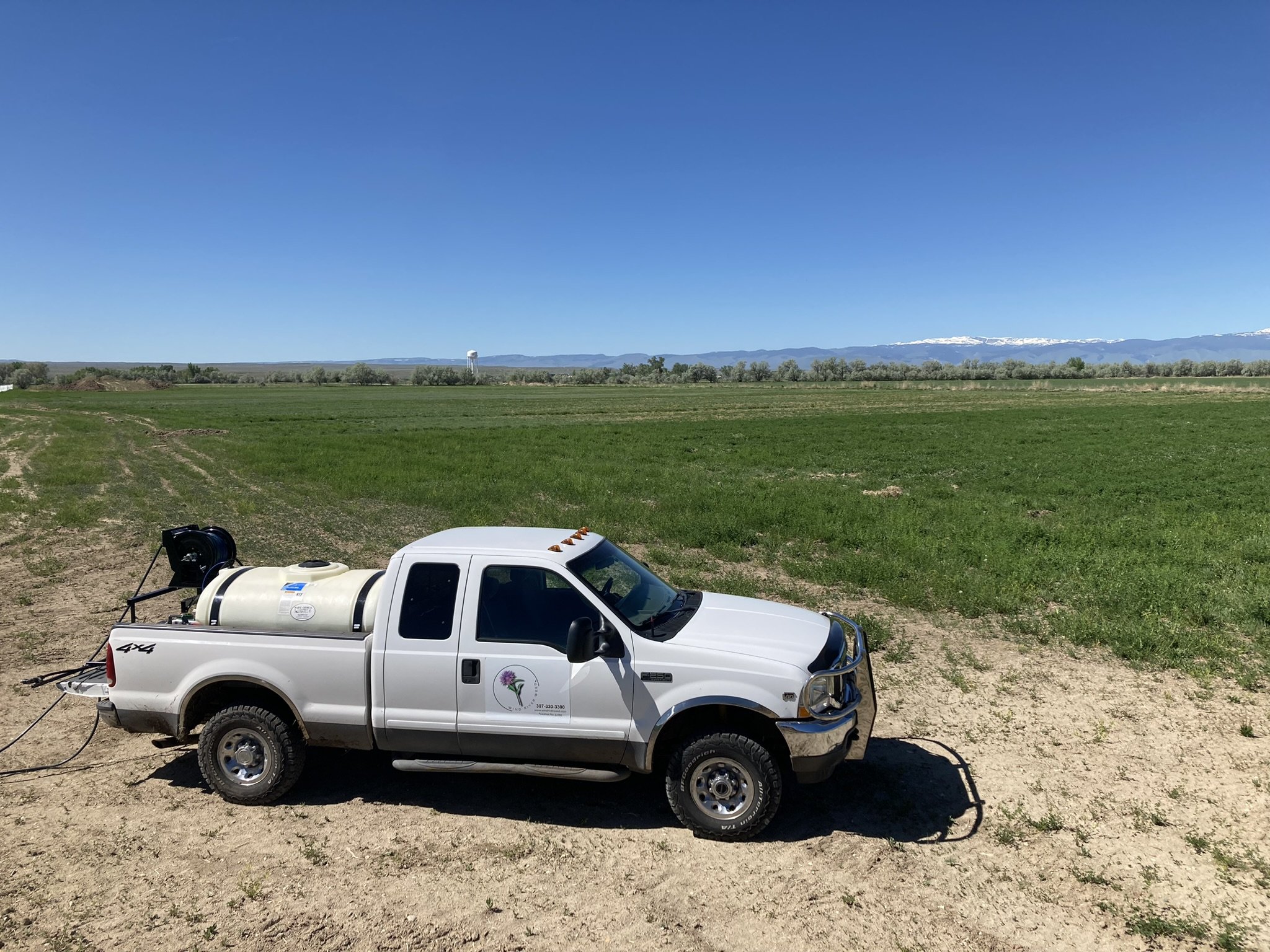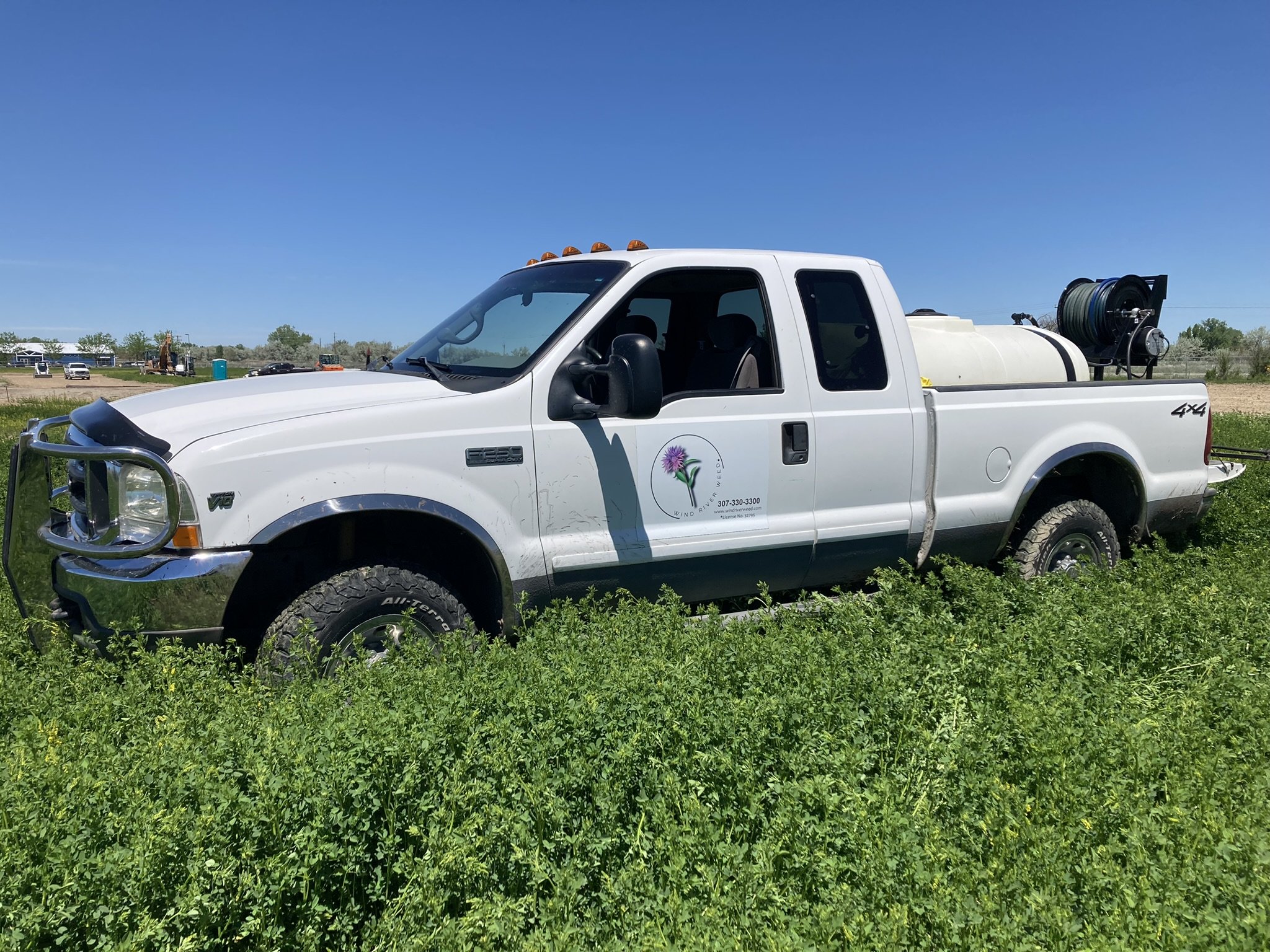Our Services
-
-
Selective Weed Control for Livestock Pastures
Selective Weed Control for Natural Grass lands
Selective Weed Control for Riperian Zones
Selective Weed Control to preserve Sage Brush and Other Natural Areas
Click Here
-
-
-
Cheat Grass has been identified as having a major financial impact across Wyoming
There are new Chemicals that target Cheat Grass
Requires a Multi Year Program
Click Here
-
Land Management Program
Brush Hog
Weed Removal
Dump Trailer Services
Click Here
Fremont County Wyoming
"Unlock the Potential of Your Land:
Wind River Weed is a dedicated team that offers innovative solutions and flexible services to maximize the value and sustainability of your property.
Additional Services
-
At Wind River Weed we understand that maintaining a beautiful and healthy residential property requires effective weed control. Our Residential Property Weed Spraying Service is designed to help homeowners and property managers keep their landscapes free from invasive weeds, ensuring a lush and thriving outdoor environment for families to enjoy.
-
Financial Assistance: Enrolled participants may receive reimbursement of up to 80% of the total treatment cost for pre-approved projects conducted by third-party certified custom applicators.
-
What should we know about this service? How much does it cost, what does it entail? Better descriptions result in more sales.
Book appointment
At Wind River Weed, we prioritize building lasting relationships with our customers. Our approach begins with active listening and understanding your unique needs and concerns.
We look first to learn and understand, we then share our thoughts observations and or solutions. We may not be the right fit and that is ok—we're here to guide you in the right direction.
As proud ambassadors of Fremont County Weed and Pest, we're dedicated to connecting you with the valuable resources and cost-share pricing available to residents of Fremont County, Wyoming. Let's work together to achieve your land management goals!"




















More than Just….
Spraying Weeds
According to the National Road Map for Integrated Pest Management ( http://www.ipmcenters.org/IPMRoadMap.pdf), IPM incorporates pest biology, environmental information, and available management technology in order to prevent unacceptable levels of pest damage using the most economical means, while posing the least possible risk to people, property, resources, and the environment. This definition applies to agricultural, residential, and non-crop areas, such as wildland and rangeland. It is important to note that the definition of IPM does not necessarily require that multiple control techniques be employed, nor does it imply that chemical control options should be avoided.
In rangelands, nearly all invasive-plant management strategies should use an IPM approach. The magnitude and complexity of rangeland invasions, combined with the costs for their control, most often necessitate the use of a combination of mechanical, cultural, biological, or chemical methods. These technologies can be used sequentially or in combination and should provide complimentary or synergistic control of the invasive plant in an economically and ecologically effective manner to meet management goals.3
Integrated invasive plant management, according to the definition of IPM, emphasizes the recovery of ecosystem function that can include energy flow, nutrient cycling, and water retention of the soil. This sustainable approach provides a context for managing invasive plants at an ecosystem-centered level, rather than focusing on the control of a specific invasive plant or on the use of a pest control technology.3 For this reason, all available tools should be considered during development of integrated weed-management programs, and those selected should optimize attainment of specific management objectives by the most economical means.
Weed Control Methods
Within an IPM context, selection of the proper management tool(s) and program can depend on a number of factors, including weed species, effectiveness of the control techniques, availability of biological control agents or grazing animals, length of time required for control, environmental considerations, chemical-use restrictions, topography, climatic conditions, and relative cost of the control techniques. There are numerous examples describing the effectiveness of an IPM approach for several invasive plants using a variety of control method combinations.1,5,8 The advantages and disadvantages of weed-control tools will vary depending on the invasive plant and the characteristics of the invaded site. The merits of each control measure should be considered when developing integrated weed management programs.
Mechanical
Mechanical control techniques either remove the entire plant or physically damage shoots, roots, or root crowns of plants to the point where they can no longer survive. Mechanical control methods include hand-pulling, hoeing, tilling, mowing, grubbing, chaining, cutting, and bulldozing. These techniques can be expensive, and they disrupt the soil, creating disturbed sites prone to invasion (for review see DiTomaso1).
Mowing is often used to control annuals, but can occasionally reduce seed production and can provide suppression of biennials and perennials, if used repeatedly. Timing is critical to the success of mowing. Typically, mowing or cutting perennial herbaceous or woody plants that reproduce vegetatively will stimulate production of new stems from vegetative buds below the cut surface. Tillage, chaining, bulldozing, grubbing, root-plowing (power grubbing), roller chopping, and shredding are more effective techniques to control woody species, but create disturbed sites that are often quickly occupied by invasive species. Tillage is not generally practiced on rangeland; it can spread perennial invasive plants by fragmenting and transporting vegetative reproductive structures such as rhizomes or creeping roots. Most mechanical treatments work best on relatively level terrain.
Cultural
Cultural control practices in rangelands most often include fire, grazing, or revegetation efforts. All these strategies require manipulating disturbance regimes to suppress invasive plants and to enhance desirable vegetation (for review see Masters and Sheley3).
Fire has played an important role in the formation and maintenance of rangeland ecosystems. As with any disturbance, fire effects on ecosystems and invasive-plant management are influenced by its frequency, intensity, seasonal timing, and interactions with other disturbances. In general, prescribed fire is most successful for the control of late-season annuals and will typically stimulate perennials that resprout from the base.
While overgrazing without periodic rest can selectively reduce desirable grass competitiveness and can increase invasive plants, appropriate grazing can shift a plant community toward more desired species. Because most animals have preferences for certain plants, grazing systems can be designed with different classes of livestock to increase utilization of some invasive plants. The level of selectivity also depends on stocking rates, as well as grazing intensity and frequency.
Revegetation or re-establishment of desirable and competitive plant species is the best long-term, sustainable method to suppress or inhibit plant invasions, while providing plants with greater forage value and enhanced wildlife habitat. When rangeland deterioration is severe and when few desirable species are present, it may be necessary to revegetate the site to reclaim the productive potential. In most cases, revegetation is expensive.
Revegetation is most successful when used as part of an IPM program. It is essential to control invasive plants in order to create an environment more conducive to establishment of desired vegetation that will fill the niche vacated by the controlled invader.3 Selecting the right species is critical to the success or failure of rangeland revegetation programs. Seeded species must be capable of establishing and should be adapted to soil conditions, elevation, and climate on the site. Planted species should be competitive with invasive plants, and they should contribute to improved ecosystem function. Land managers are often faced with the decision of whether to use native or introduced plant materials that differ in cost, establishment success, and resistance to reinvasion.
Biological
Classical biological control is used on some rangeland invasive plants and involves relocation of natural enemies of the invasive plant, typically insects, from their native habitats onto plants in their invaded habitats. The long-term goal of these programs is to exert sufficient stress on the target plant to reduce plant competitive ability and dominance. With insect agents this can be achieved by boring into roots, shoots, and stems, by defoliation, by seed predation, or by extracting plant fluids. Synchrony in the life cycles of host plant and agent, adaptation of the agent to a new climate and habitats, ability of the agent to find the host, capacity of the agent to reproduce rapidly, and the nature, extent, and timing of the damage caused by the biocontrol agent are among the factors that determine the effectiveness of the biocontrol agents.
While biological control efforts have targeted a number of habitats, the majority of released agents have been directed toward invasive plants of rangelands.9 Of the 72 examples worldwide where weed biocontrol programs have been underway for a sufficient period to assess control, only 28% have resulted in control that could be rated as sometimes complete, while 35% have shown no control of the target plant.10 Thus, despite its great benefits, biological control efforts are often unsuccessful. Overall, however, the numerous examples of successful biological control have made a great impact on the management of some important invasive plants.
Very little, if any, research has been conducted on trophic-level effects of introducing an exotic organism to control another exotic organism. Furthermore, once an insect is released into a new environment, it can pose a potential risk to native plants. Although most releases have proven to be safe, there are instances where introduced agents have utilized native plants. The seedhead weevil, Rhinocyllus conicus, introduced from Europe for the control of musk thistle (Carduus nutans) and other thistles, also reduced seed production in native Cirsium species.11
Chemical
Herbicides are generally classified by their mode of action, selectivity, and location of application (foliar or soil). Soil-applied herbicides generally target emerging seedlings, whereas foliar-applied herbicides control plants ranging from seedlings to fully mature plants.
On rangelands, herbicides are the most frequently used tool for the control of invasive plants. Unlike cropland environments where all plants except the crop are considered to be weeds, on rangelands there is often only one or a few invasive plants that are the target of control measures. These plants are generally growing in association with several desirable species. Thus, selectively is a key issue in an herbicide control program, and most herbicides are selective only within certain rates, environmental conditions, and methods of application.
Herbicides can be applied on rangeland by fixed-wing aircraft, helicopter, ground-application systems, backpack sprayers, or rope wick. The application method selected depends on the situation and the selectivity required. While nearly all rangeland herbicides are considered to have low toxicity to vertebrates and invertebrates, there are other risks including the potential for ground or surface water contamination, wind-blown herbicide movement on soil particles, and damage to desirable plants.
The most commonly used herbicides on rangelands are these: 1) auxin-like growth regulators (2,4-D, aminopyralid, clopyralid, dicamba, fluroxypyr, picloram, and triclopyr) that selectively control broadleaf species; 2) glyphosate, a non-selective foliar-applied herbicide that has no activity in the soil; and 3) imidazolinone and sulfonylurea herbicides (chlorsulfuron, imazapic, imazapyr, metsulfuron, rimsulfu-ron, and sulfometuron) that disrupt the synthesis of amino acids essential for plant growth. The imidazolinone and sulfonylurea herbicides are phytotoxic at very low rates and have a broad range of selectivity spectrums that can be important in perennial-grass revegetation programs.


